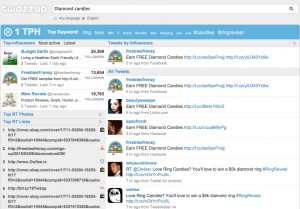Last week we heard that UK wages rose at their fastest pace in more than six years during the three months up to July 2015. This wage increase sat alongside a slight decline in the jobless rate to 5.5%, all of which suggests that the labour market is continuing to gain in strength and vitality.
While that’s obviously good news for the economy as a whole, and jobseekers in particular, there are implications for organisations when it comes to attracting talented employees. When job opportunities and salaries increase, so does competition for the best and brightest minds, whether that’s the most experienced in their field or sharp, ambitious graduates coming straight out of university.
Businesses are under increasing pressure to prove why they’re the employer of choice. Companies that fall short in this respect will find it hard to build and maintain the kind of ambitious, motivated and innovative workforce required to underpin growth and economic success.
The idea of a ‘war for talent’ isn’t new – the term was first coined back in 1997 – but it’s been less evident in recent years, as employees have hunkered down in the face of a stagnant economy and wide spread job insecurity. Now that things are hotting up, this ‘war’ is firmly back in the headlines and front of mind for anyone involved in hiring and talent management.
One thing that has changed dramatically since 1997 are the tools – or weapons, to continue the war analogy – available to organisations in the fight for the best teams, and social media is right at the top of that list.
Social is an increasingly important and effective channel for communicating with jobseekers and employees, and is playing an increased role in the development and management of employer brands and corporate reputations.
Understanding and leveraging the power of social is one key thing businesses can do as part of their mission to find and secure the brightest talent.
Here are three ways social can help in achieving the goal.
1. Reaching out to ‘passive’ jobseekers
Social recruiting is the act of engaging with users of a social platform to identify and start conversations with potential candidates, and it’s changing the face of recruitment.
The most recent data on this trend comes from last year, in the form of the 2014 Social Recruiting Survey from Jobvite. In that study, 73% of recruiters reported having hired candidates from social media. On the other side of the coin, a study by Aberdeen Group last year revealed that 73% of 18-34 year olds found their last job through a social network.
One of the most interesting aspects of social recruiting is that it allows you to find and start conversations with ‘passive’ jobseekers, i.e. those people who might not be actively looking for a new role but would make a move if the right opportunity came along. That opens up a whole new audience that’s previously been largely inaccessible.
So the message is clear: if you’re still relying on static adverts to draw in candidates then it’s time to get out there and get social.
LinkedIn is by far the most popular channel for social recruitment. Research conducted by OnRec earlier this year showed that 61.5% of recruiters are already using the platform. The simplest route is to search by job title and start looking through profiles for bright sparks who stand out. Another route is to join LinkedIn groups relevant to the role in question and look for the most active and engaged members who have something useful and relevant to say. Once you’ve identified those people you can make a direct approach about the vacancy.
While LinkedIn might be the obvious choice, there are plenty of opportunities to engage with potential candidates on other social platforms, such as Twitter and Facebook, so get creative and get chatting.
2. Showcasing your company culture
As we discussed in our blog on the candidate experience earlier this week, organisational culture and values have a significant impact on the strength of an employer brand. Businesses that are renowned for fostering a positive working environment are more popular with jobseekers and more likely to attract the best candidates.
Social allows companies to showcase their brand and culture, whether that’s through regular posts highlighting things happening within the business – social events, training initiatives, the introduction of new benefits, staff achievements etc. – or the promotion of specific recruitment marketing content such as employer value proposition (EVP) videos or creative job ads. We particularly love this video from Dropbox, which does a fantastic job of promoting their fun, creative culture.
Social allows you to share your interesting, creative content far and wide, and start building a relationship with people who may end up working for you in a month’s time, or a year… or five years.
3. Allowing employees to tell your brand story
While it’s useful for candidates to hear about your culture and values from the business perspective, it’s even more powerful for them to hear those positive messages from existing employees. Members of staff who are truly engaged will share official recruitment marketing content alongside their own comments and insights.
Employees can posts reviews and testimonials on their personal social accounts, their employer’s owned social platforms and on sites such as Glassdoor, which allows people to provide anonymous feedback on their existing employer. The latter is still growing in popularity among UK jobseekers, but it’s already had a significant impact in the US – research conducted by Software Advice last year showed that almost half of those looking for work visited the site to get the inside scoop on potential employers.
Receiving brutally honest TripAdvisor-style reviews from employees may sound daunting, but it’s a highly effective way of showing what your company is really like, no holds barred. Companies that live by clear, strong values have nothing to fear in the world of social, but there are also real opportunities for businesses that aren’t quite getting it right. Hearing the good, the bad and the ugly from employees sheds light on what’s working and what needs to change in order to create a happier and more engaged workforce which, in turn, will help to attract the best talent.
If you’ve yet to embrace social as part of your recruitment strategy then now is the time to join this growing movement and start building relationships with your workforce of tomorrow.
Business & Finance Articles on Business 2 Community
(144)
Report Post



